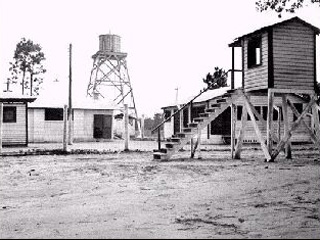1870
Below is a report from M. Martin, who is the Commanding Officer of the State Penitentiary during the year 1869. The report is written February 14, 1870 to Major General Geo. B. Carse, Adjutant-General of Florida (this letter is written to give Carse a wrap-up of the previous year's activities).
FIRST PRISON CHAPLAINS
"...Owing to the cramped condition of our finances; the commanding officer did not consider it proper to hire a chaplain, but relied on such assistance as he could from the humane to preach gratuitously to the prisoners. In this he has been aided by the Reverend LaFayette Hargrave, of the A.M.E. Church (colored), who has held divine service in the prison on alternate Sundays. Recently, he has been transferred from this district, and we are now without assistance in this respect. Other gentlemen, amongst whom may be numbered the Honorable J.C. Gibbs, Secretary of State, and the Reverend James Page, have, when opportunity offered, preached to the prisoners. A Sunday-school has been established, which is regularly attended by about thirty of the prisoners, who take a warm interest in it, and manifest a decided change for the better."
1871
The Legislature passes a law making the prison a civil organization instead of a military post. The Warden receives $6 per day. Turnkeys and watchmen earn $2 per day.
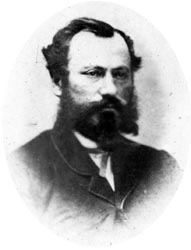
Malachi Martin becomes warden of Florida Prisons. (Photo courtesy of FPC.)
Malachi Martin uses his connections in Tallahassee to win an appointment as warden of Florida's prison in Chattahoochee, a position he held until 1877. He earns a reputation as a cruel and corrupt warden who uses prisoner labor for his own benefit. "The American Siberia," a book written in 1891, describes the prison as a place of almost unrelieved barbarity. Martin uses inmate labor to build his home in Mt. Pleasant (between Chattahoochee and Tallahassee). He also uses inmate labor in his vast vineyards and winery from which he makes a huge fortune.
Click here for a larger view and more information about this facility. Prison department at Florida State Hospital. (Photo courtesy of FPC.)
1872
The agency budget from January through November totals $18,080.90. Inmate labor tasks itemized on the budget include clearing 200 acres at $10 per acre and railroad labor (Jacksonville, Pensacola and Mobile Railroad) and earns the agency an additional $1,891.48.
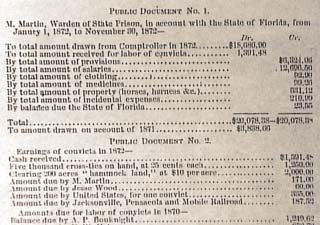
1872 Public Document #1 shows the State Prison earnings and costs from January through November 1872.
1876
Inmates are relocated from the Chattahoochee prison, and it becomes Florida State Hospital. Later, some of its patients are put to work making mattresses in the old powder magazine building, and it earns the nickname "the Mattress Factory."
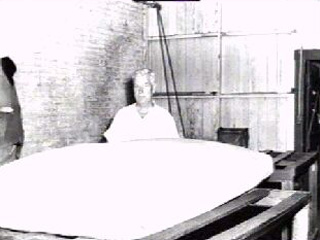
Some patients constructed mattresses in the powder magazine building at Chattahoochee, nicknamed "the mattress factory." (Photo courtesy of FPC.)

Workers at the Florida State Hospital
Florida State Hospital at Chattahoochee
According to historian Jim Barineau, who worked in Administrative Services at Florida State Hospital, the photo below shows "how the powder magazine looked in 1996 prior to the start of a historic preservation project that transformed the building into a museum and conference center. The project was funded through grants from the Department of State's Bureau of Historic Preservation and in-kind matches provided by the hospital's craftsmen and labor from the River Junction Work Camp located on the (Florida State Hospital) campus. This is just one of the many facets of a mutually beneficial relationship we enjoy with the Department of Corrections."
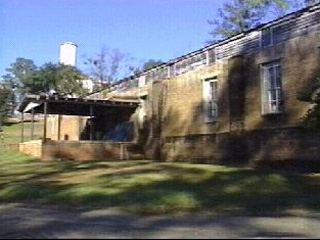
1996 photo of powder magazine prior to reconstruction.

This is how the powder magazine building looked in 2004.
Today, Florida's prisons are located throughout the state, but the number is slightly more concentrated in Northern Florida, where land is still relatively inexpensive.
- 1821-1845
- 1868-1876
- 1877-1895
- 1900-1919
- 1921
- 1922-1924
- 1927
- 1928-1931
- 1932 | CHAPMAN
- 1933-1935
- 1936-1939
- 1940-1945
- 1946-1949
- 1950-1955
- 1956-1961
- 1962 | WAINWRIGHT
- 1963-1965
- 1966-1969
- 1970-1975
- 1976-1979
- 1980-1986
- 1987 | DUGGER
- 1988-1990
- 1991 | SINGLETARY
- 1992-1995
- 1996-1998
- 1999 | MOORE
- 2000-2002
- 2003 | CROSBY
- 2004-2005
- 2006 | MCDONOUGH
- 2007
- 2008 | MCNEIL
- 2009-2010
- 2011 | BUSS
- 2011 | TUCKER
- 2012 | CREWS
- 2013-2014
- 2014 | JONES
- 2015-2018
- 2019 | INCH
- 2020-2021
- 2021 | DIXON
- 2022-Today
- Population Summary Table

